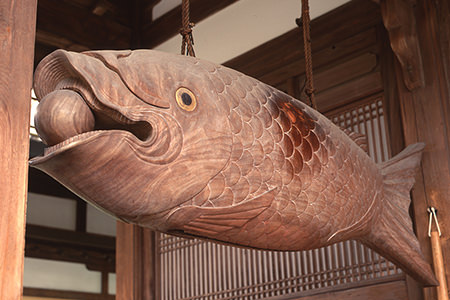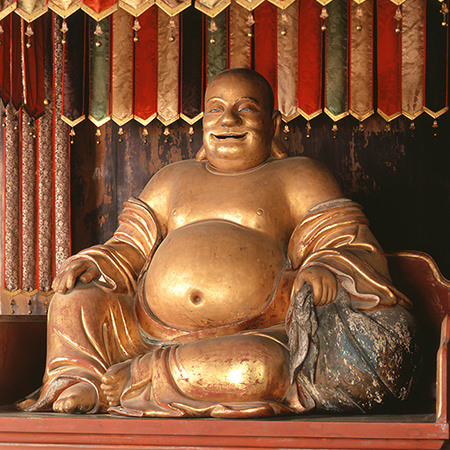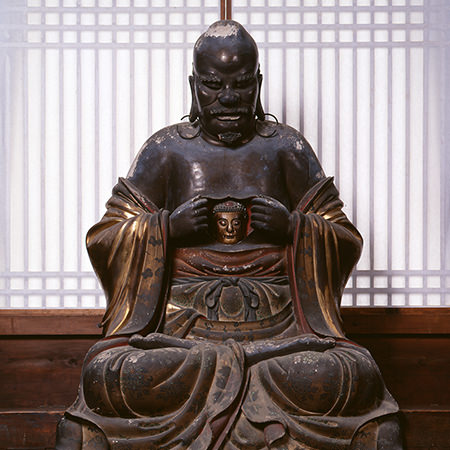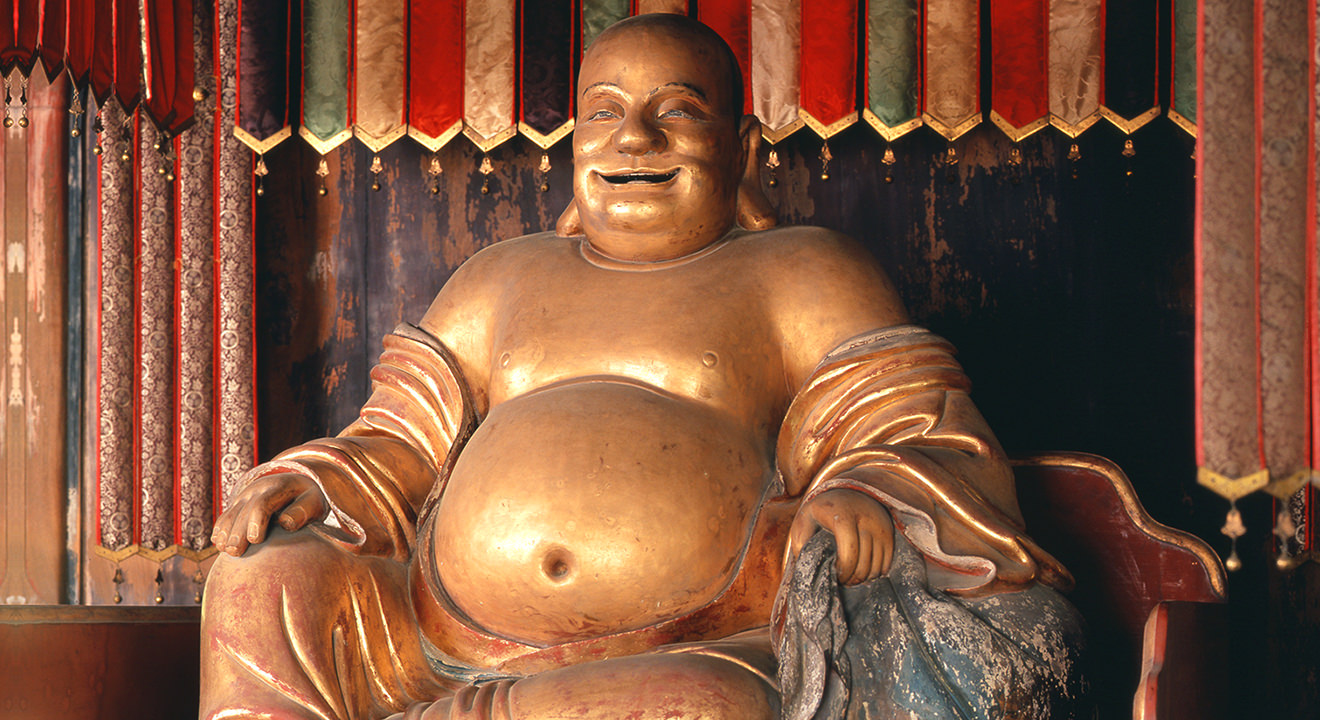
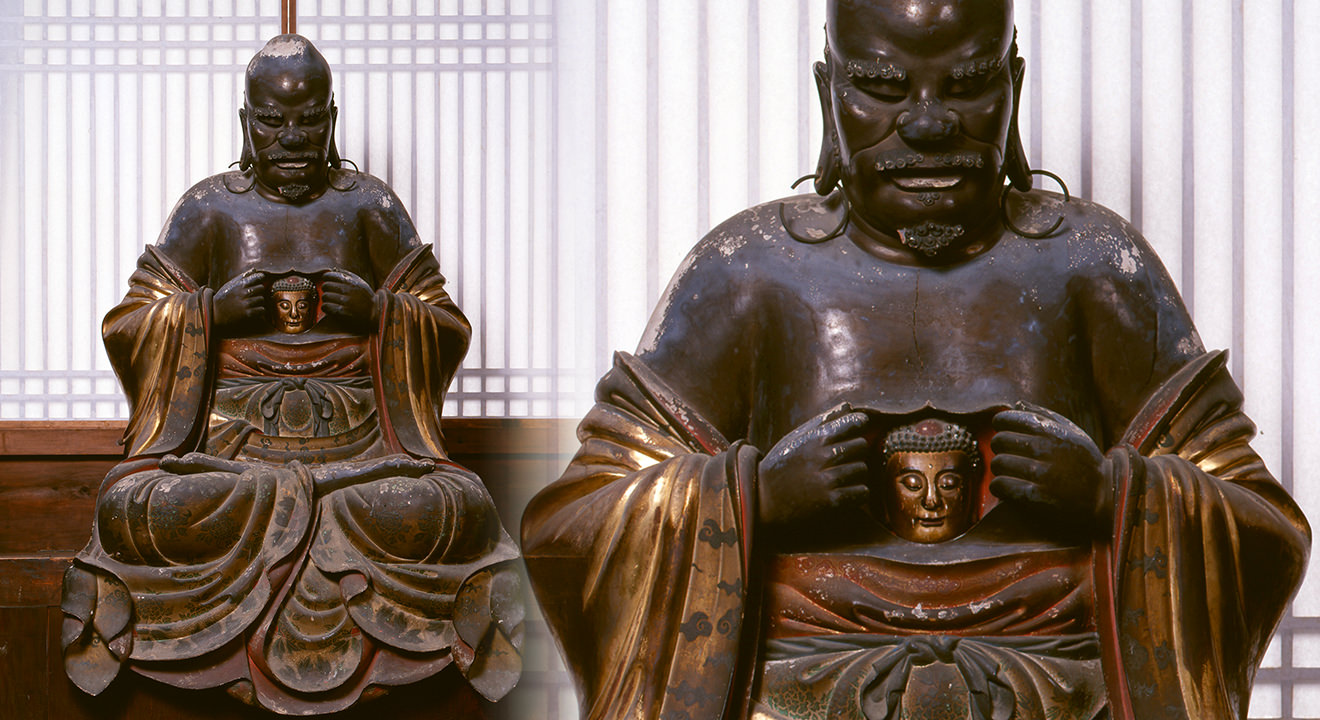
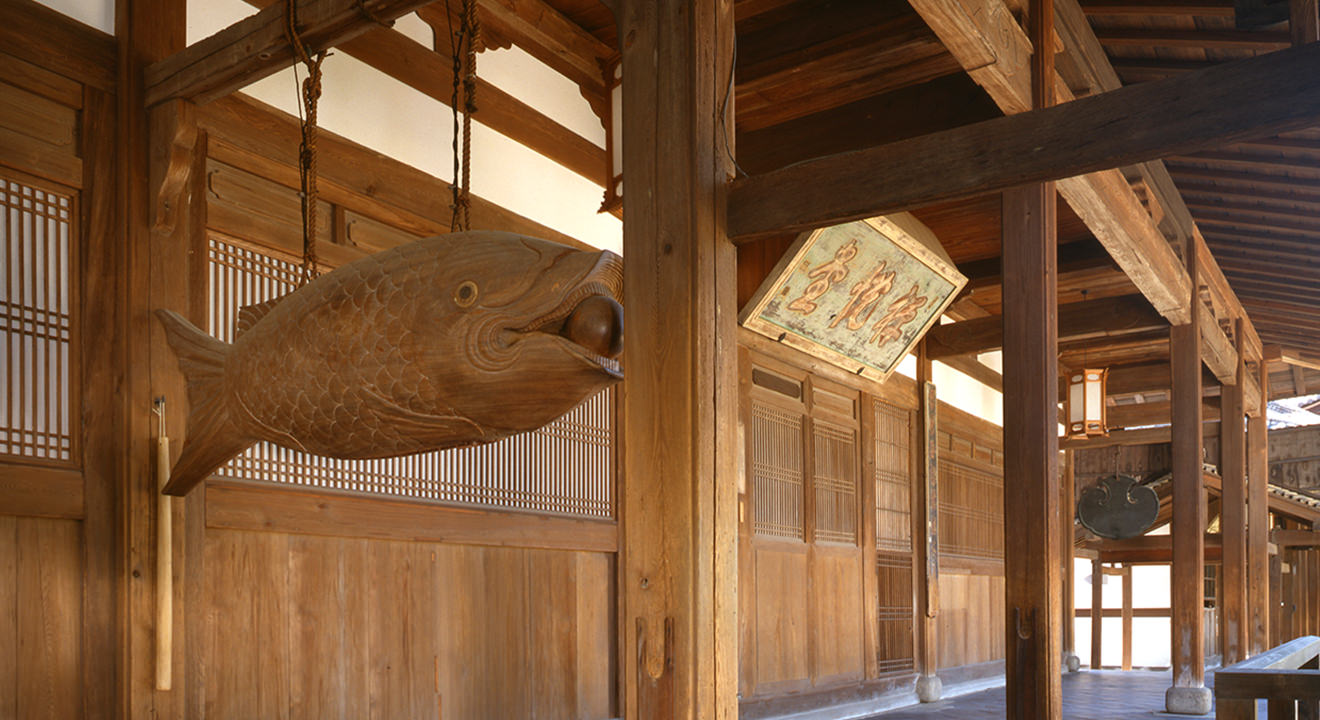
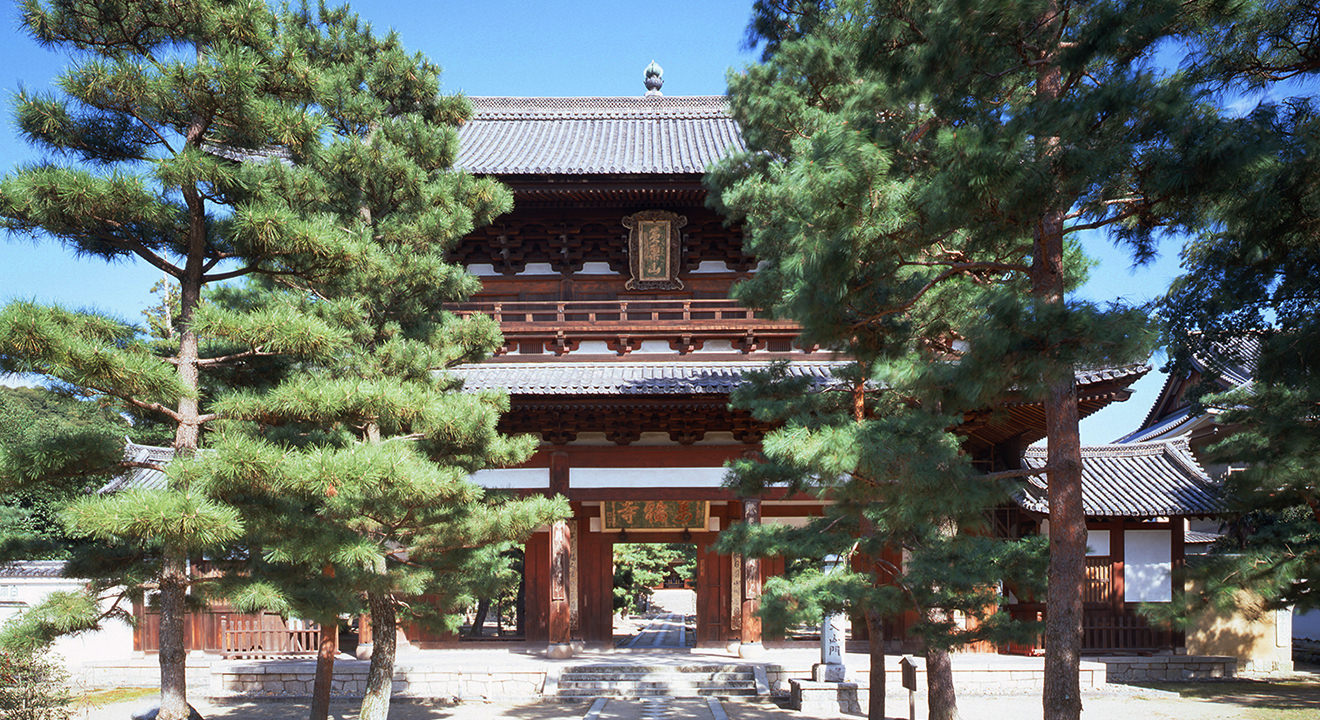
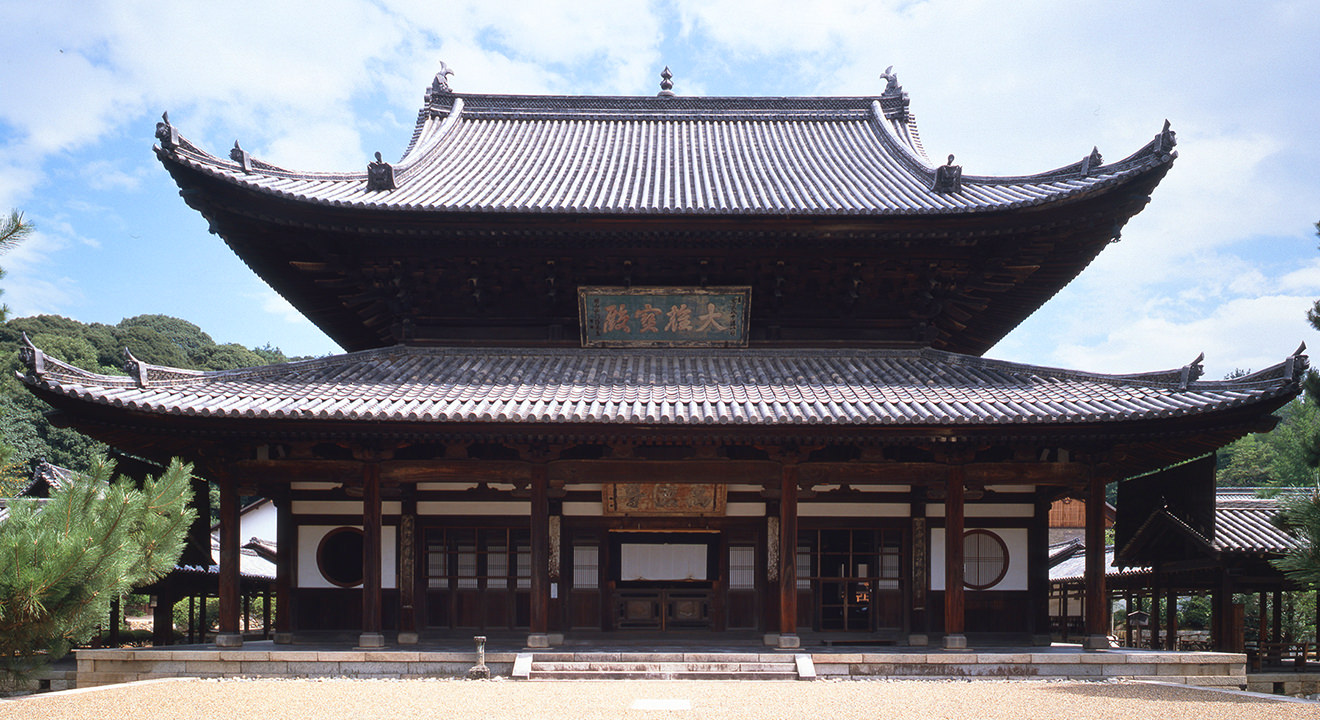
Obaku-san Manpuku-ji "The Greatest Chinese-style Temple in Japan"
An old Zen Buddhist temple called Wanfu Temple lies on Mount Huangbo in Fuzhou, Fujian Province, China. Its abbot Yinyuan Longqi, who is known as Ingen Zenji (Zen-master Ingen) in Japanese, visited Japan and founded Obaku-san Manpuku-ji (which shares the same Chinese character as Huangbo-shan, Wanfu-si) in Uji, Kyoto in 1661.
Manpuku-ji was built with Sumatran teak and is an absolutely rare Japanese temple since it remains very well as it was at the time of its construction, and most of the buildings are designated as Important Cultural Properties.
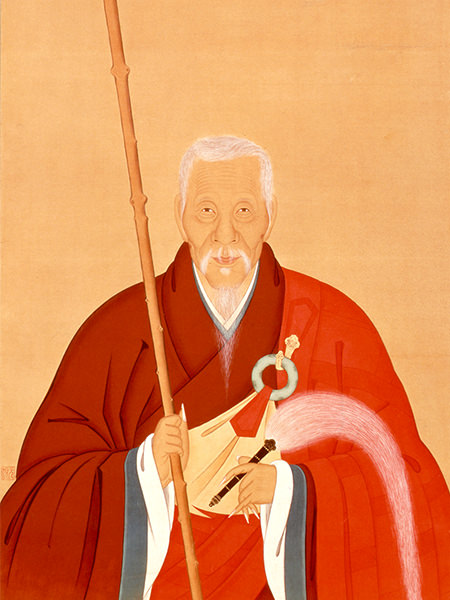 Statue of Ryuki Ingen【important national treasure】
Statue of Ryuki Ingen【important national treasure】
